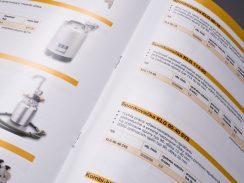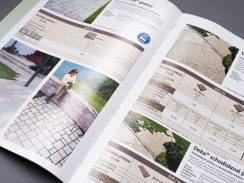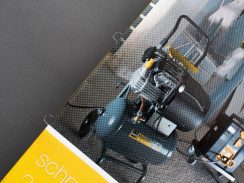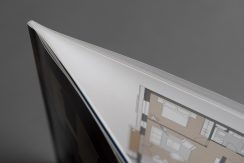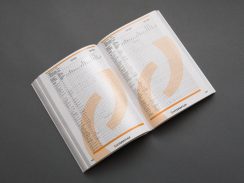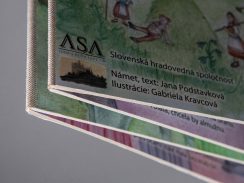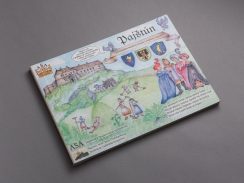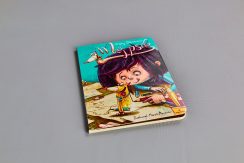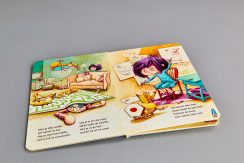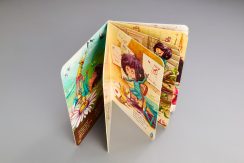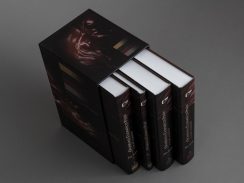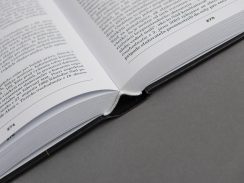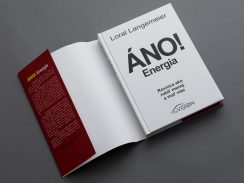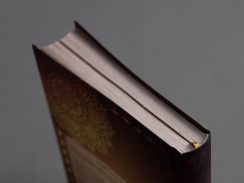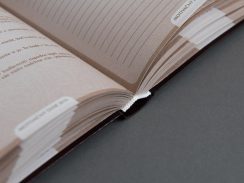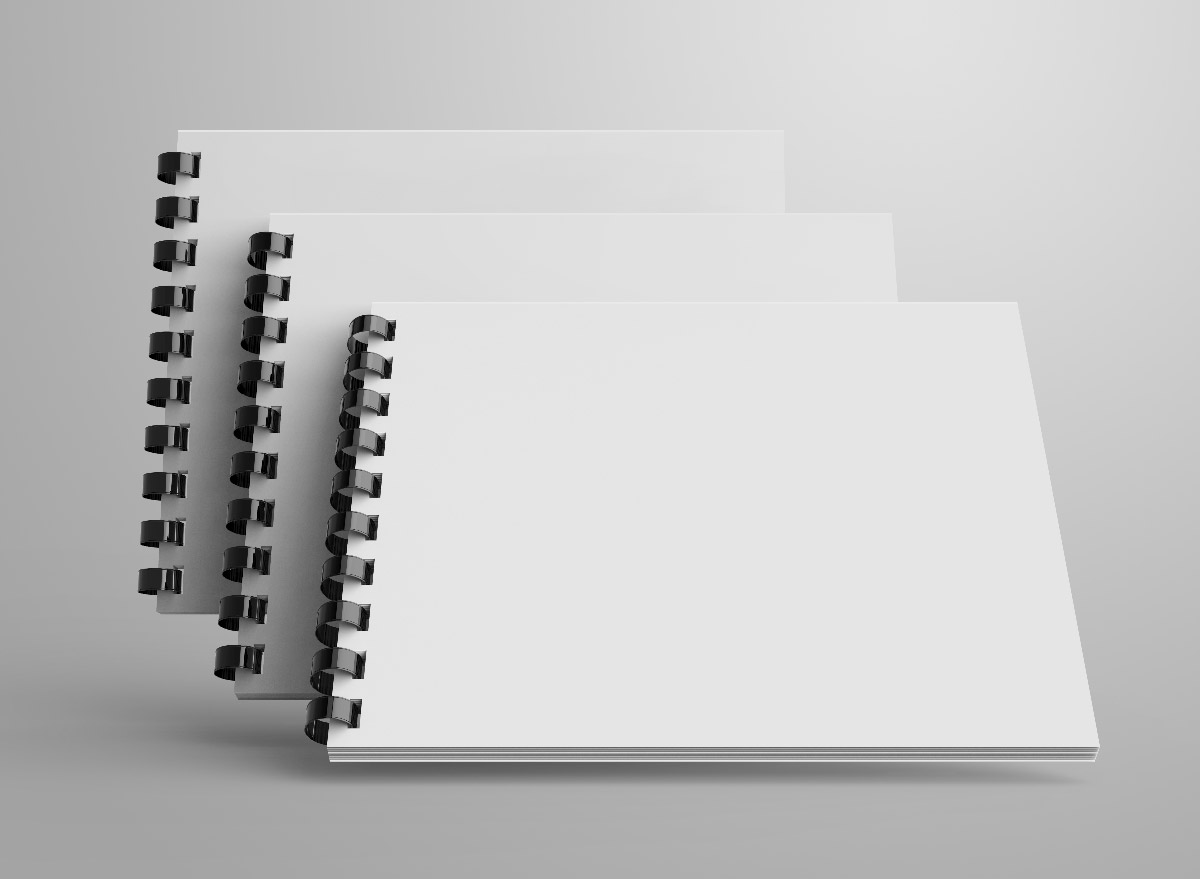V1 – sewn binding
The book sheets are stitched together with the cover in the spine and then trimmed on three sides. The actual stitching is performed using a flat or rounded wire. Depending on the type, size and scope of the printed material, a combination of these wires may be used: 2-4 flat wires, 2, rounded wires, 2 flat + 2 rounded wires. Only a single wire is used for small format materials.
V2 – glued binding
Loose sheets are bonded to the spine with glue, hung in the cover and then trimmed on three sides. These types of bindings differ depending on the type of glue that is used. Hot Melt glues are commonly used, with PUR glues used in certain applications where higher durability is required (typically when there are more coated paper pages). The drawback of PUR glue in terms of the speed of finishing is the 24-48 hour drying period it requires. A cover with flaps on one or both sides can be used with this type of binding.
V3 – block binding
The spine of a brochure is sewn with a wire. An added cover is placed over the binding to create the spine. This specific binding method is only used sporadically today. It is used for school workbooks as an example.
V4 – sewn binding
This binding is more durable than a V2 binding as the book sheets are stitched with a common or fusible thread and the resulting textblock is then glued into the cover. This binding is primarily used for its improved durability in catalogues and books with higher numbers of pages. A cover with flaps on one or both sides can be used with this type of binding.
V5
This semi-hard binding uses lightweight cardboard book boards and the textblock is glued or sewn with thread. The binding is similar to V2 bindings and is now almost never used.
V6
This binding is familiar from board books for children. Basically individual sheets of lightweight cardboard are glued together.
V7 – hard binding
Half-cloth hard binding with borders. This binding features a combined facing. The book plates are covered with paper while the book spine is covered with cloth or another suitable material. Currently a broad range of cloths are available for this application.
V8 – hard binding
The V8 hard binding is a cloth binding with borders and a solid facing, i.e. a full cloth binding. It may also have a dust cover. This binding has three variants:
V8a – hard binding with book boards covered with laminated paper.
V8b – hard binding with book boards covered with a paper facing.
V8c – hard binding with book boards covered with another facing, such as leather or artificial leather, including board cushions, i.e. using a foam insert.
V9
Hard binding with plastic book boards reinforced by a non-plasticised PVC foil or cardboard.
Flexible binding
This binding is a step between soft and hard bindings. The textblock is inserted into the book boards, but these are made of carton, meaning they retain the flexibility of a soft binding. This is a very modern type of binding that is often used thanks to its practical characteristics.
Spiral bindings
These bindings are used for calendars and notepads, and in brochures and catalogues with modern designs. There are multiple types of spiral bindings, while Twin Wire bindings are currently considered the best available option. This permits the 360° turning of sheets without displacing the pages. One or two hooks for hanging can be inserted when the bindings are used for wall calendars. Both metal and plastic spirals are currently available. A broad range of colour options are available for all types of spiral bindings.
Comb bindings
Documents are bound with a plastic comb using this type of binding. A transparent foil is used as the front page of the bound document and carton in various finish options is used as the rear cover. The design of the comb permits multiple uses and the addition or removal of individual pages. However, they are only used in small printing runs.

